THE MUSICARTA PENTATONICS WORKBOOK
The Mix'n'Match Blues
Minor CPTs, Part Four
In this Mix'n'Match Blues module, your left hand gets to play the minor pentatonic scale-plus-CPT in a 'call and response' version, and we add the second chromatic passing tone to give us the full minor pentatonic range.
Here's the first module performance - the 'call and response' version.
Watch-and-listen until you can see the overall shape of the arrangement. (Listening to music 'constructively' like this is a habit we should all cultivate!)
Fingering the LH scale, ascending
As always, do at least as many repetitions with the right fingering as you need to get the fingers to fall on the right keys automatically.
Fingering the LH scale, descending
Getting the thumb-under descending scale smooth is always going to be a challenge.
And both ways...
Practice running up and down this plus-one-CPT scale.
Focus on knowing in advance what the notes are going to sound like. This scale is used widely in all kinds of popular music, not only the blues, so the better you 'see it in the keyboard', the closer you will be to improvising or writing melodies.
Building the first performance
Now start to put your hands together for the call and response performance.
Remember: You're not 'performing' yet, so don't try to play in time (unless you 'just can').
Here's a repeat of the performance you should be able to achieve if your preparation has been sound.
The two-CPT performance
Here's the two-CPT (semitone) version we build up to next. Listen closely to the more smoothed-out bass 'response' - which is where the second CPT appears.
Finding the second chromatic passing tone
The second chromatic passing tone is between the seventh and eighth - a semitone below the octave. Using the two-handed method to find it in the A minor, D minor and E minor pentatonic scales (four notes in each hand).
Note the new technical term - diatonic. Diatonic is the opposite of chromatic, and means without any additional notes inserted, so, just the five pentatonic scale tones.
Follow the video procedure to find and drill the new two-CPT minor pentatonic scale. Here are the relevant keyboard diagrams.
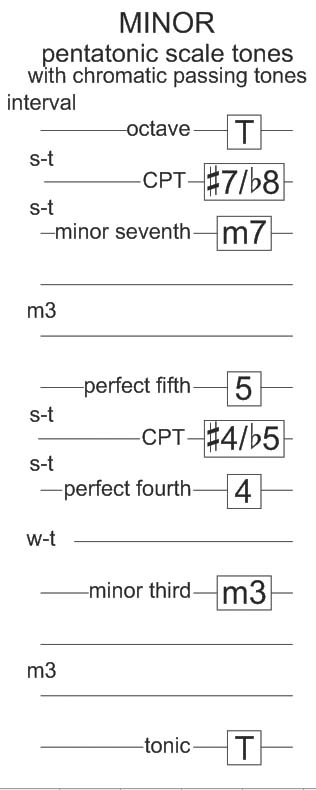 |
 Note: The A minor keyboard does not align with the D and E minor keyboards below.   |
Building the two-CPT performance
Build your first-stage two-CPT performance methodically, making sure you can play each section reasonably well before going on to the next one.
An optional ending
It's nice to work a bit of 'sustain' into this quite bare style of playing. This little trick will have your audience asking themselves, "How does he/she do that?"
Blues playing is full of little tricks like this that the musician works on for years until they become characteristic of his/her style. Start your collection now!
Another two-CPT option
Here's another way to use both CPTs in the left hand and add more variety to your Mix'n'Match Blues.
You now have lots of options - and not all of them explored here. Spend time just listening through various combinations in your head until you think you've arrived at the perfect arrangement.
Remember that you can jot it down without writing down the actual music - any shorthand like the three going around/up/down bass figure symbols will do.
Proficiency in any creative style of playing is built through hours of 'messing about'. Enjoy!
|
OUT NOW! |
THE MUSICARTA BEAT & RHYTHM WORKBOOK At last! An effective approach to keyboard rhythm & syncopation skills. Learn more! |
ONLY $24.95! |
|
THE MUSICARTA PENTATONICS WORKBOOK video course Home/Index pages The Pentatonic Scales
Practice Patterns
Melody Work and
Playing by Ear
Pentatonic Riffs
and Diaries - Minor Pentatonic Major Pentatonic
Chromatic Minor
Chromatic Major
Pre-video Pages
Pentatonics videos
Archive Pages
|
The MusicartaA methodical approach to keyboard syncopation for
|
PUBLICATIONS
exciting keyboard
creativity courses
CHORDS 101
WORKBOOK

~HANON~
video course

Musicarta
Patreon
PENTATONICS
WORKBOOK
video course

Creative Keyboard
video course

BEAT AND RHYTHM
WORKBOOK
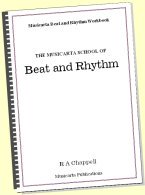
- Volume 1 -

12-BAR PIANO
STYLES WORKBOOK
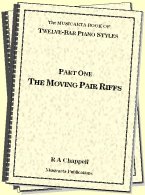
MUSICARTA MODES
WORKBOOK
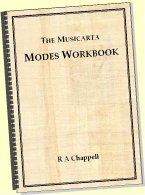
PIANO STYLE
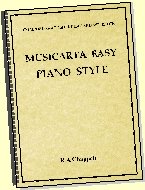
CANON PROJECT
video course
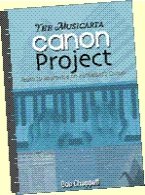
VARIATIONS
video course

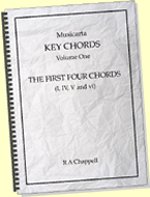
- Piano Solo -
video course

- Piano Solo -


YouTube playlists





 THE LOGO
THE LOGO
